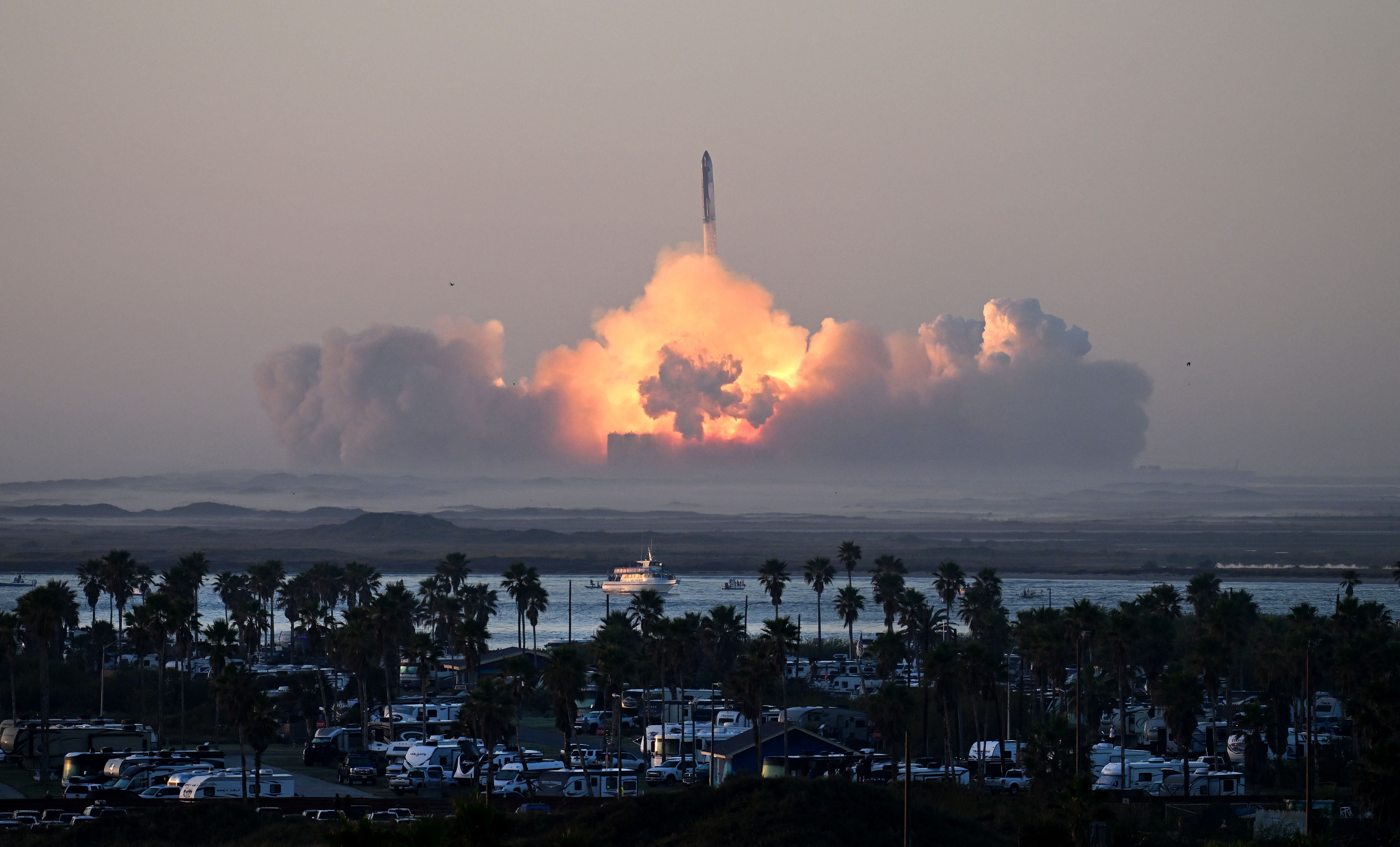Starship: SpaceX reveals next test flight for Mars-bound spacecraft after spectacular explosions
The biggest and most powerful rocket ever built will try to reach orbit again – and land

SpaceX has revealed the next test flight for its Mars-bound Starship spacecraft, the biggest and most powerful rocket ever built.
Elon Musk’s private space company hopes the vehicle will eventually take humanity back to Mars. But first it must make it into orbit without exploding – which Starship has done in its two previous tests.
This time around, SpaceX will try to meet a host of new objectives, too. That will include opening and closing the payload door that would allow objects to be carried to space, and a controlled re-entry down to Earth.
The mission will also see Starship take a new trajectory, which SpaceX said would allow it to try new techniques while “maximising public safety”. The new route will see Starship attempt to land in the Indian Ocean.
The test could launch as soon as 14 March, SpaceX said. That is pending regulatory approval, and could be delayed if weather or other conditions mean the launch cannot go ahead.
Starship has been flown in two test launches so far. Both had attempted to achieve the first orbital flight and then land in the Pacific Ocean – but blew up before they had a chance to do so.
The first launch, in April 2023, saw Starship fail to split apart as intended, and its engineers intentionally blew it up in the sky around four minutes after it launched. The second came in November 2023 and it survived for about eight minutes before blowing up.
SpaceX said that most recent flight “achieved a number of major milestones and provided invaluable data to continue rapidly developing Starship”. Mr Musk and SpaceX have repeatedly stressed that even a dramatic explosion can be useful in guiding future development of the spacecraft.
“Each of these flight tests continue to be just that: a test. They aren’t occurring in a lab or on a test stand, but are putting flight hardware in a flight environment to maximize learning.”
Join our commenting forum
Join thought-provoking conversations, follow other Independent readers and see their replies
Comments
Bookmark popover
Removed from bookmarks